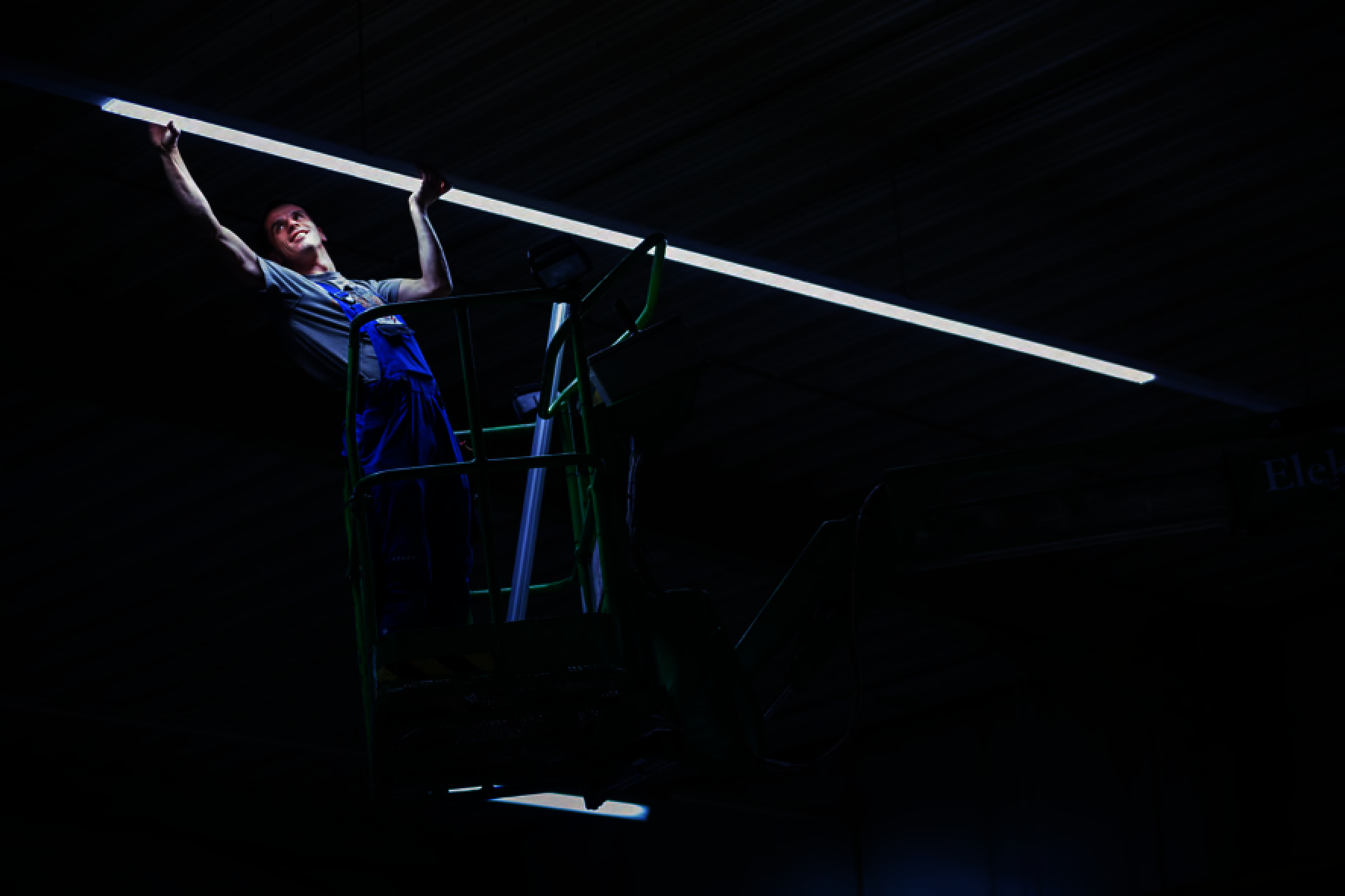
Mounting and electrical connection

In practice, the application-specific selection of luminaires is not only based on photometric criteria, but also on constructional and electrotechnical characteristics.
The following sections outline general selection criteria for luminaires as well as luminaire repercussions on components of the electrical installation as far as they are relevant to the installation configuration. Essentially, normative requirements and application-related practical experience are taken into account for this.
Particular emphasis is placed on the operational safety of the electrotechnical installation, which is governed by construction regulations.
In Germany, the predecessor of the construction regulation DIN VDE 0100 "Erection of high-voltage systems with nominal voltages of up to 1000 V" was published in 1895. Later, this regulation was given the title "Erection of low voltage installations", which was renamed "Electrical installations in buildings" in 1997 on the basis of the corresponding publication IEC 60364 "Electrical Installations of Buildings" of the International Electrotechnical Commission (IEC). Since parts of the old regulations DIN VDE 0100 are still in effect, all three titles can still be found in the valid parts of this series of standards.
In Germany, the Deutsche Kommission Elektrotechnik, Elektronik, Informationstechnik (DKE) within the DIN Deutsches Institut für Normung e.V. as well as the VDE Verband der Elektrotechnik, Elektronik, Informationstechnik e.V. are responsible for standardisation in the realm of electrical engineering.
At European level, the CENELEC (Comité Europeen de Normalisation Electrotechnique) is responsible for these matters. The work results of the CENELEC are published either as European standards EN (which must be implemented as national standards without modification) or as harmonisation documents HD (which are only partially implemented at national level with country-specific but equivalent amendments).
At international level, electrotechnical standardisation is handled by the International Electrotechnical Commission IEC. The IEC’s work results are published as international standards. Due to agreements between CENELEC and IEC, a joint coordination is conducted in the final stage of the IEC standardisation process which is aimed at publishing the IEC standard in question as a European standard without modifications, if possible. For luminaires, this process is mostly successful. Inevitable deviations from the IEC standard either apply to all CEN states (common modifications) or only in the states where legal requirements necessitates such deviations (A-deviations).
In Great Britain, the applicable construction regulation is British Standard BS 7671 which is published as IEE Wiring Regulations (IEE – Institution of Electrical Engineers) and features approximately the same structure as IEC 60364.
In France, there is the construction regulation Norme Française NF C 15-100 (formally UTE C 15-100), also structured similarly to IEC 60364.
In the Netherlands, the corresponding construction regulation is NEN 1010 "Veiliggheidseisen voor laagspannungsinstallaties" of the Nederlandse Norm Onwerp, which is also organised according to the structural outline of IEC 60364.
At European level, there is the harmonisation document CENELEC HD 384, which also follows the structure of IEC 60364.
The following information substantially refers to the specific portions of the harmonisation document HD 60364 regarding required safety standards for electrical installations. Based on the international standards series IEC 60364, they form the basis for the uniform European standardisation of the construction of electrical installations which are valid as mandatory regulations. Whether or not the requirements specified therein fully represent the respective current version of the national standards must be verified diligently on a case-by-case basis.